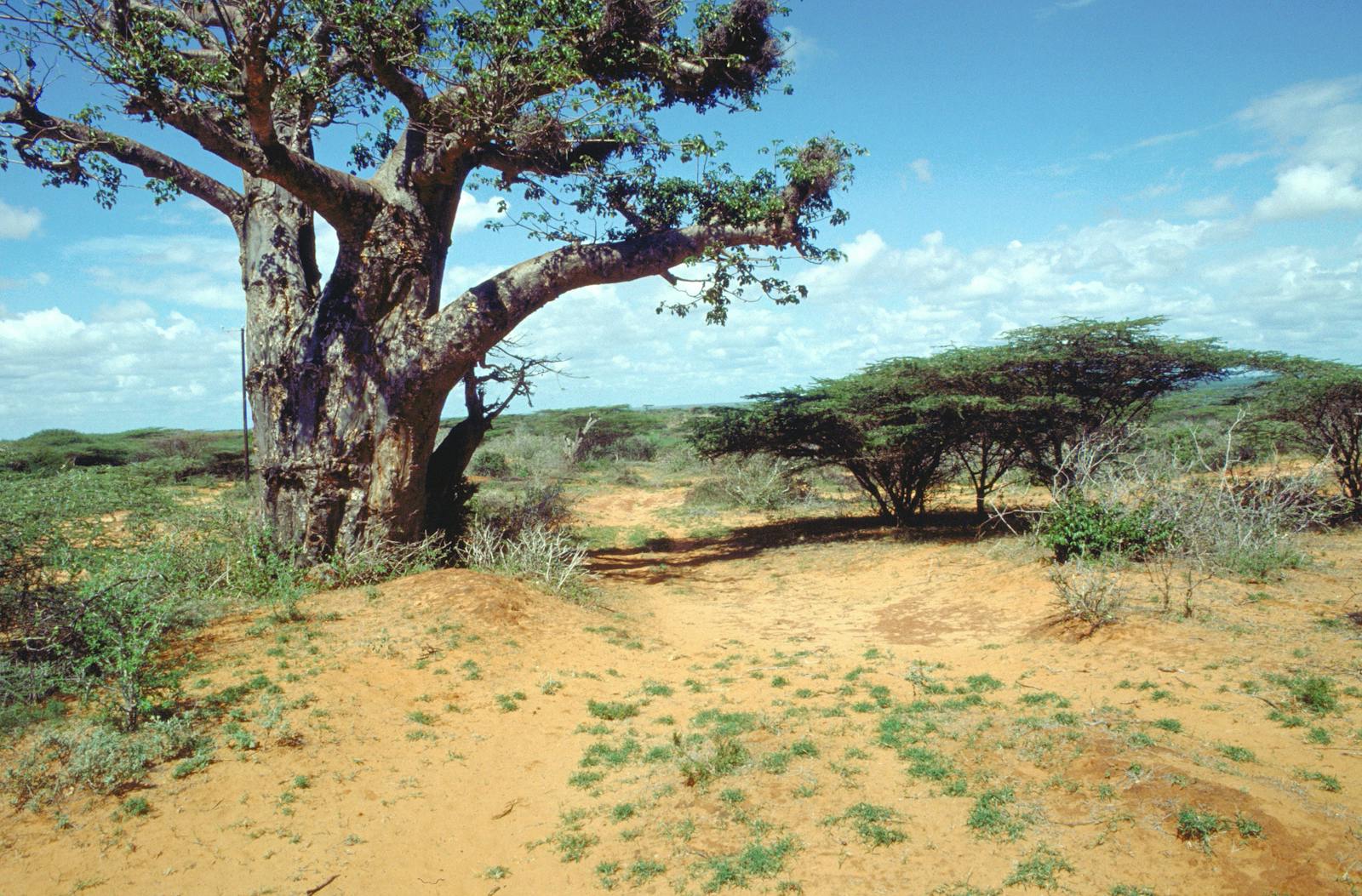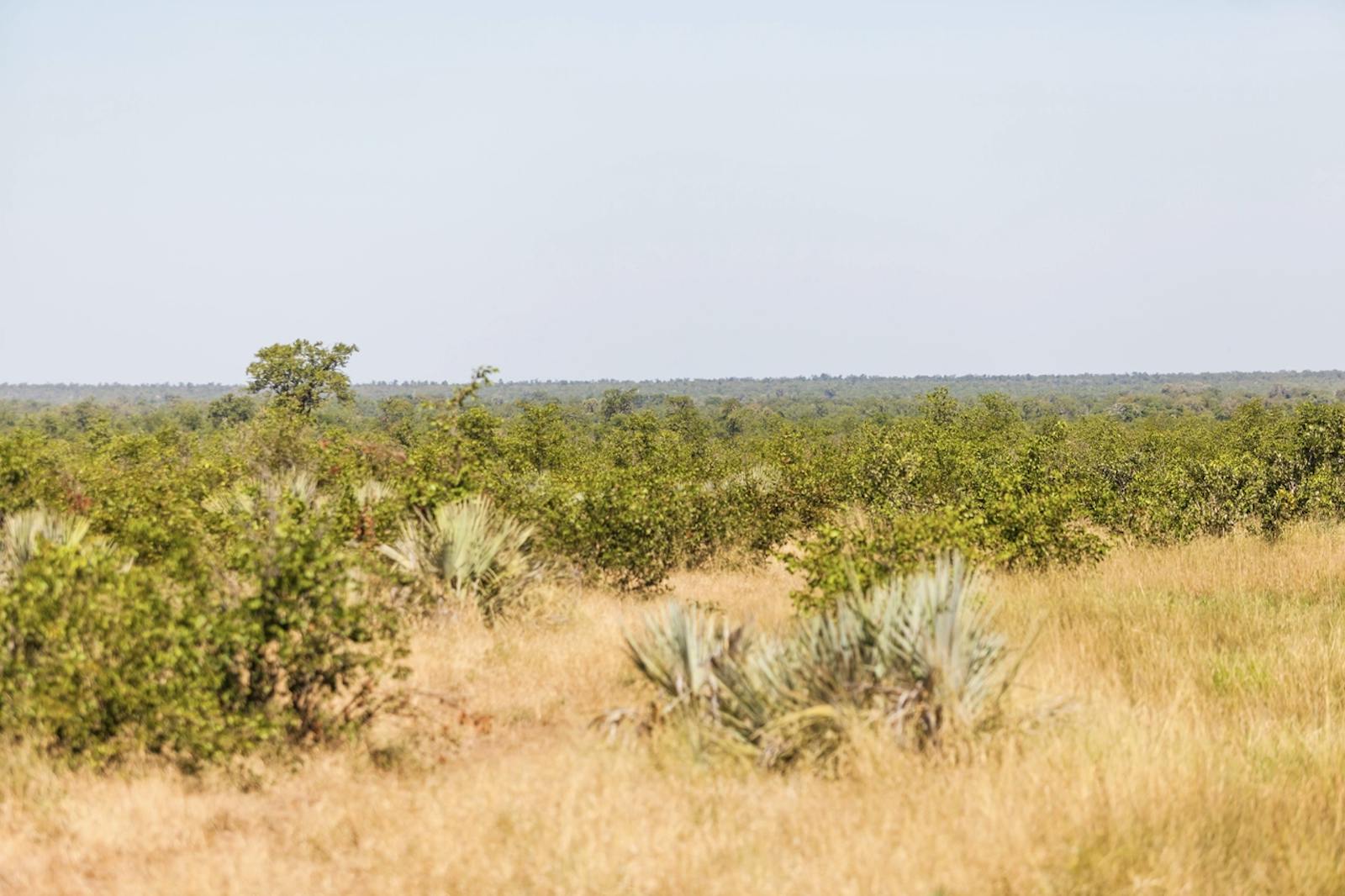Somali Acacia-Commiphora Bushlands and Thickets
The ecoregion’s land area is provided in units of 1,000 hectares. The protection goal is the Global Safety Net (GSN1) area for the given ecoregion. The protection level indicates the percentage of the GSN goal that is currently protected on a scale of 0-10.
Bioregion: Lake Turkana-Sudd Grasslands, Bushlands & Forests (AT21)
Realm: Afrotropics
Ecoregion Size (1000 ha):
75,643
Ecoregion ID:
55
Conservation Target:
17%
Protection Level:
7
States: Ethiopia, Somalia, Kenya
The source of the famous aromatic resins, myrrh and frankincense, can be found from the endemic Commiphora guidottii plant and the Boswellia rivae tree respectively. They are just two of the estimated 2,500 plant species, around half of which are endemic, that inhabit this ecoregion. The Horn of Africa is also a notable center of endemism for mammals, particularly for arid-adapted antelopes such as the dibatag, beira, hirola, and Speke's gazelle. Between 400 and 1,000 hirola live in the vicinity of Bura east of the Tana River in Kenya.

The flagship species of the Somali Acacia-Commiphora Bushlands and Thickets ecoregion is the Swayne's hartebeest
The ecoregion occupies the majority of the Horn of Africa to the east of the Ethiopian Highlands, including the Ogaden Desert and northeast Kenyan semi-deserts. The ecoregion is mainly flat and low-lying (over half lies below 500 m), rising towards the west and north. The mean maximum temperatures are around 30°C, and the mean minimum temperatures are 15° to 18°C. Annual rainfall varies from below 100 mm in the Ogaden Desert to around 600 mm in areas bordering the Ethiopian Highlands.
There are only three permanent rivers: the Awash, Wabi Shebele, and Jubba, all of which originate in the Ethiopian Highlands. Deep, infertile sands characterize the Somali hinterland and Precambrian granites outcrop as inselbergs in southern Somalia.
The ecoregion lies within Somali-Masai regional center of endemism for plant species. Several sub-centers of plant endemism are found which often coincide with exposed limestone. Examples of endemic trees are Boswellia rivae (a frankincense tree), Commiphora guidottii (the source of scented myrrh), Steganotaenia commiphoroides (a member of the largely herbaceous family Apiaceae that grows to a 10 m tall tree), and Hildegardia gillettii (with a flask-shaped trunk).
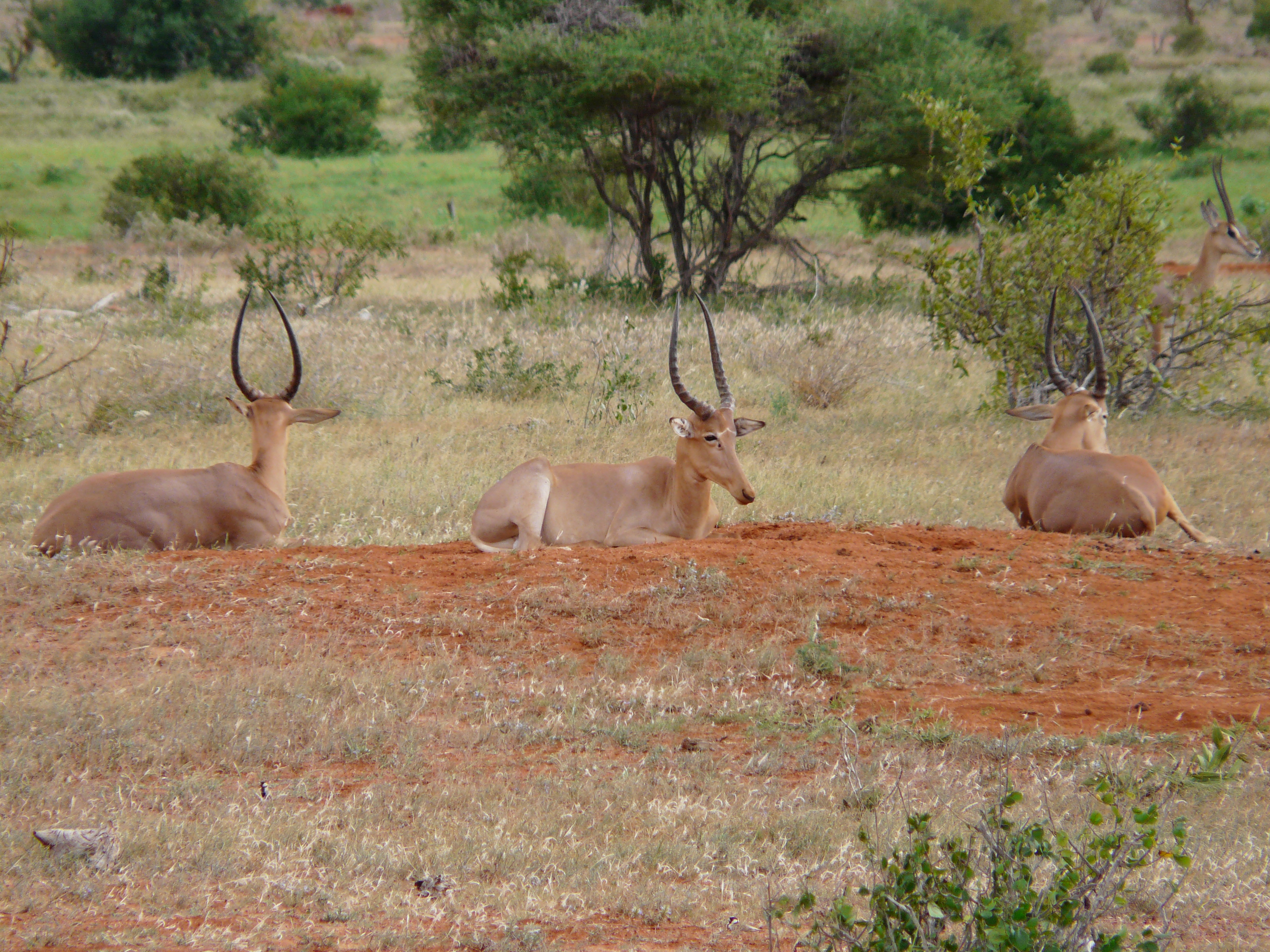
Hirola. Image credit: C JR Pobert, Creative Commons
The widely distributed but threatened ungulate species dorcas gazelle and Sömmerring's gazelle are found here. Small numbers of the formerly widespread but now endangered subspecies Swayne's hartebeest inhabit the Nechisar National Park. Elephants and buffalo were previously widespread in the wetter portions of this ecoregion. Elephant populations are decreasing, with limited numbers found in protected areas.
The Babile Elephant Reserve in Ethiopia was established to protect the only known population of the isolated, ecologically distinct elephant subspecies Loxodonta africana orleansi. Lion, leopard, cheetah, striped and spotted hyenas are the main large carnivores. The ecoregion is of very high importance for endemic reptiles, including the Somali agama, Lanza's racerunner, and Somali writhing skink.
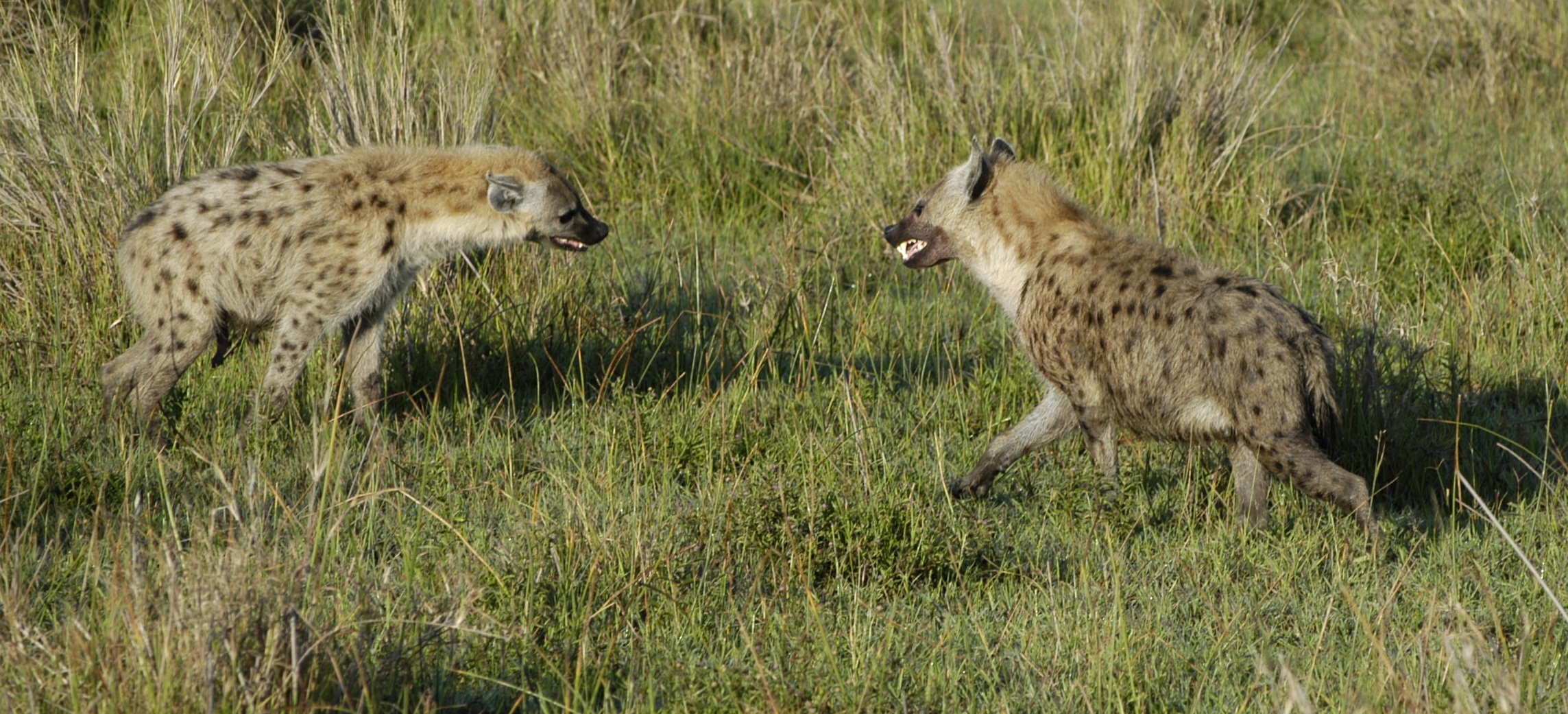
Hyenas. Image credit: Maureen Lunn, Creative Commons
The habitats of the ecoregion are mainly dry woodlands and scrub, with a gradation to grasslands and deserts in the driest places. Protected areas in Ethiopia include Nechisar National Parks, as well as Babile Elephant Sanctuary, Yabello sanctuary, Borana and Eastern Hararghe controlled hunting areas. Most of these parks are not well protected. In Kenya, the Malka Mari National Park falls within this ecoregion and in Somalia there are no protected areas.
The highest threat is from overgrazing by domestic animals, as well as encroachment of human settlement into protected areas, expansion of invasive alien species, weak law enforcement, and lack of capacity in protected areas. Some economically important species, such as the yeheb nut, may be declining due to overgrazing.
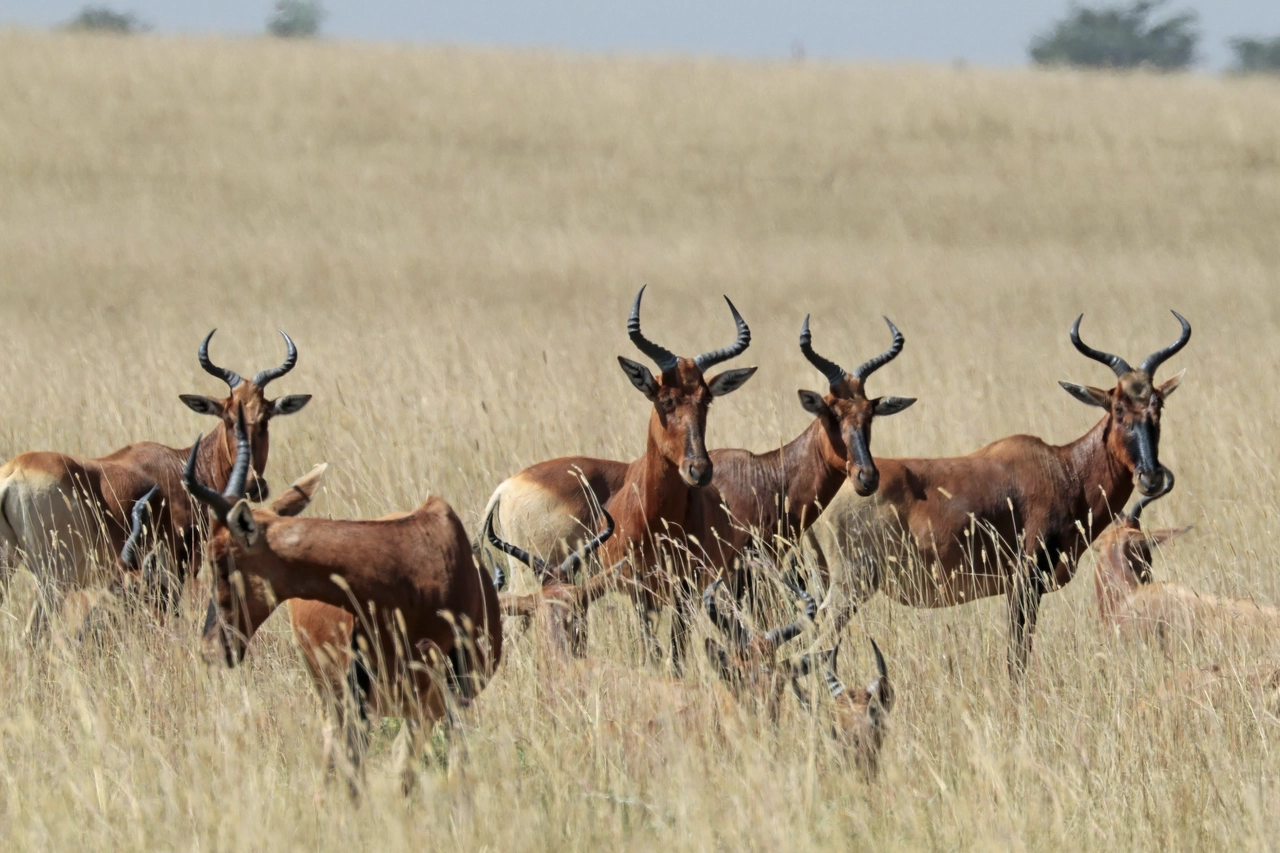
Swayne's hartebeests
In the lower basins of the three major rivers, the Awash, Wabi Shebele, and Jubba, there are extensive areas of irrigated farming. Habitats are partially degraded through fuelwood collection, particularly close to villages and towns. Land overuse is more intense in areas where large-scale farming and irrigation schemes have been launched (e.g. around Lake Ziway in Ethiopia). Natural gas fields are being developed in the region of Ethiopia closest to the Somali border.
A severe problem in northern Somalia is the uncontrolled exploitation of the Acacia woodlands (particularly A. bussei) for the production of charcoal. Riverine vegetation is often degraded, mostly due to the cutting of fuelwood and poles. Poaching, particularly of elephants is another threat in this region. Additionally, political instability and war over the past few decades have stifled conservation work. The Ethiopian portion is currently stable, but conflicts between protected areas and people continue.
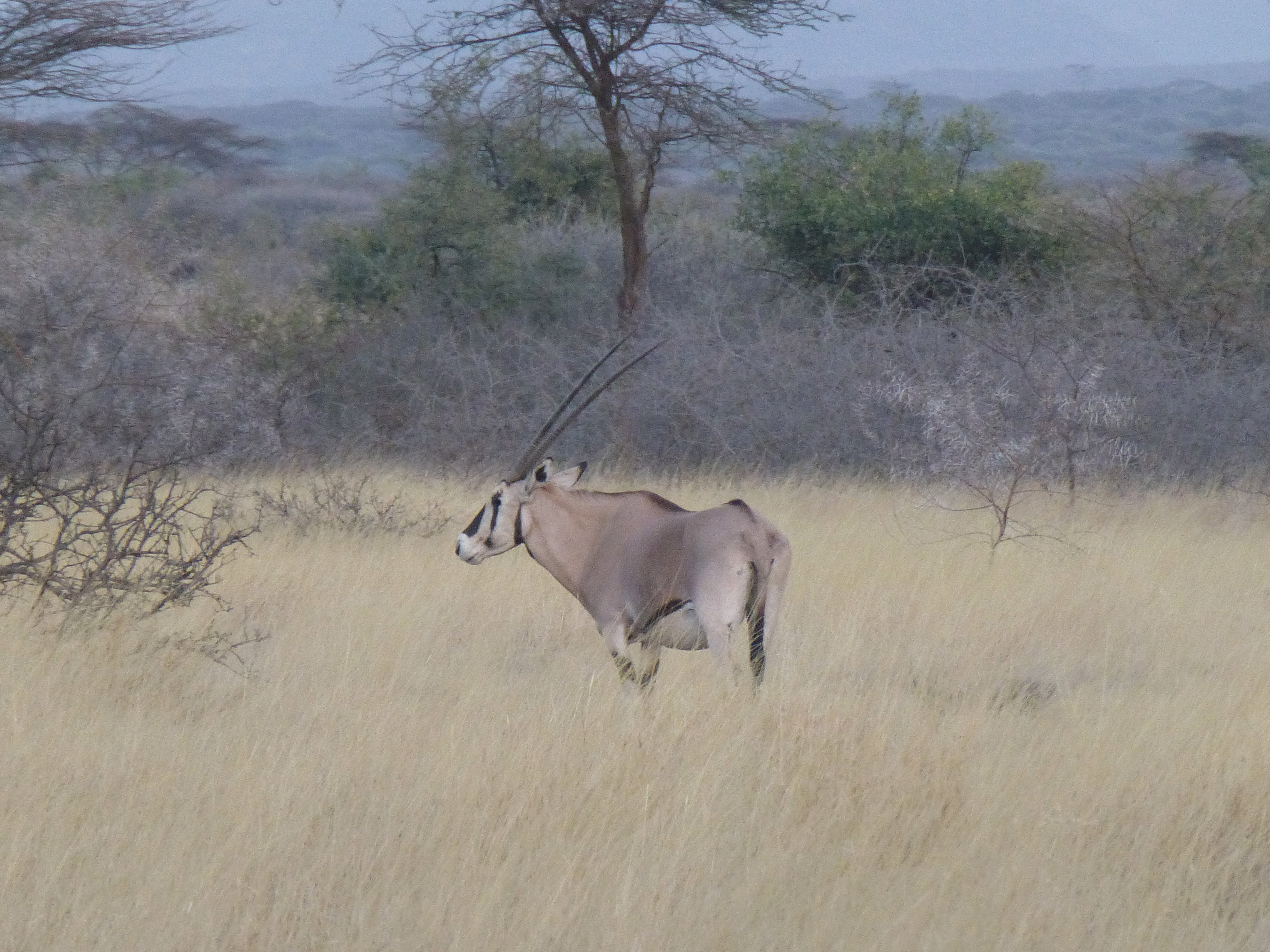
West African Oryx. Image credit: Creative Commons
The priority conservation actions for the next decade will be to: 1) strengthen enforcement preventing charcoal-based deforestation whilst promoting biodiversity-friendly alternatives, for example, beekeeping and value-added non-wooded forest products; 2) support the sustainable management of agriculture through implementation of climate-smart agricultural programs, integrated watershed management, and diversifying agricultural crops; and 3) enhance local community participation in the protected area management plans whilst building the capacity of those managing the parks.
Citations
1. Burgess, N., Hales, J.A., Underwood, E., Dinerstein, E., Olson, D., Itoua, I., Schipper, J., Ricketts, T. and Newman, K. 2004. Terrestrial ecoregions of Africa and Madagascar: a conservation assessment. Island Press.
2. Wale, M., Kassie, A., Mulualem, G., Tesfahunegny, W. and Assefa, A. 2017. Wildlife Threats and Their Relative Severity of Eastern Ethiopia Protected Areas. Ecology and Evolutionary Biology. 2(4), p.59.
3. Ullah, Saleem and Gadain, Hussein. 2016. National Biodiversity Strategy and Action Plan (NBSAP) of Somalia. FAO-Somalia.
4. Friis, I.B. and Demissew, S. 2001. A review of existing maps and the need for a new map for the Flora of Ethiopia and Eritrea. In Biodiversity Research in the Horn of Africa Region: Proceedings of the Third International Symposium on the Flora of Ethiopia and Eritrea at the Carlsberg Academy, Copenhagen, August 25-27, 1999 (p. 399). Kgl. Danske Videnskabernes Selskab.
